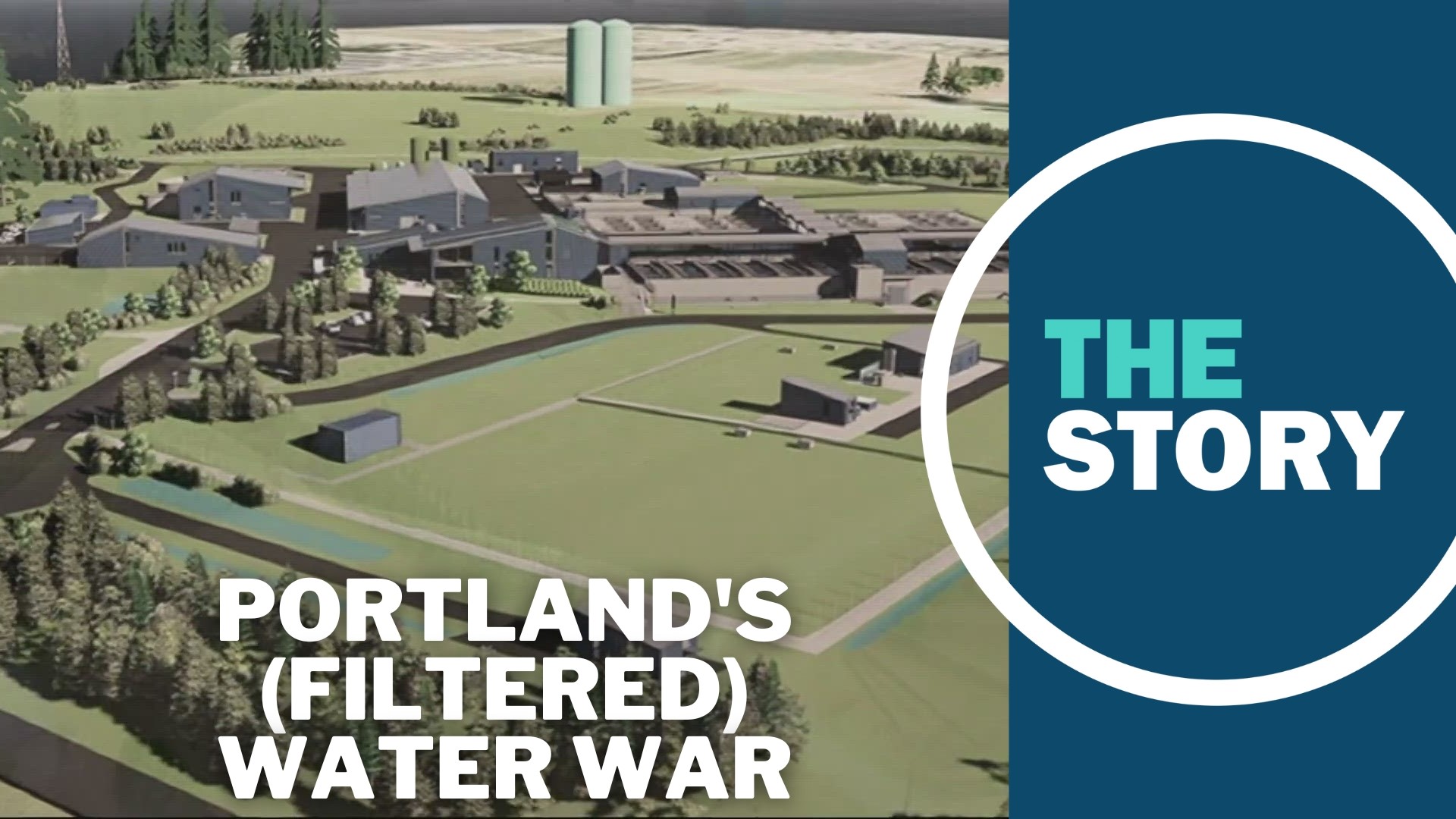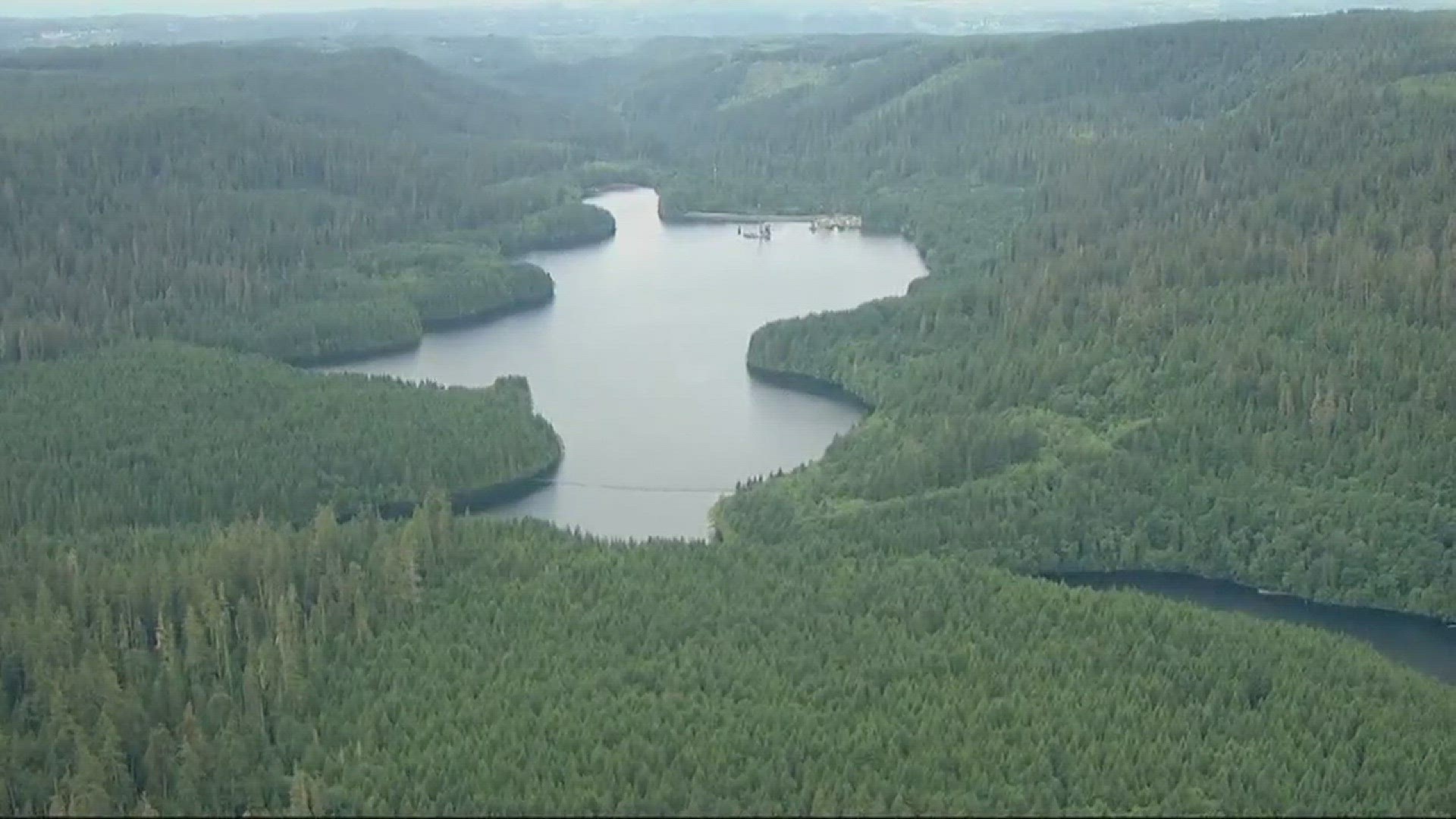BORING, Ore. —
Ian and Lauren Courter bought their home about 20 miles east of Portland to get away from it all.
The couple has four children and grows 10 acres of blueberries on their property near the border of Multnomah and Clackamas counties.
“We moved out here really for the serenity of this site, for its natural resources and the opportunity to essentially have a small hobby farm,” Ian Courter said.
But the Courters and many of their neighbors fear that the serenity of their rural neighborhood is at risk.
That’s because of a $1.8 billion, 50-acre water treatment plant proposed by the Portland Water Bureau on a parcel of land nestled among ornamental tree farms. The city argues that the land has a number of features that make the location ideal and the plant is necessary to comply with the Clean Water Act, which mandates the city start treating its water by 2027.
Many residents of the neighborhood, however, see the plant as an intrusion into their rural way of life and a violation of zoning laws — something that should be located closer to the people it serves.
“This is a ridiculous proposal in the wrong location,” Ian Courter said. “The plant should be located near or in the city of Portland, inside the urban growth area. It's that simple.”


A looming deadline
To understand how we got here, you have to go back to 2006. That’s when the Environmental Protection Agency issued the Long Term 2 Enhanced Surface Water Treatment Rule, which requires water districts to treat surface water for contaminants.
Portland gets its drinking water from Bull Run, a pristine, 100-square-mile watershed on the western flank of Mt. Hood that's been providing clean water to the city for more than 100 years.
The water was so clean, in fact, that the city was given an exemption from the rule until 2017, when routine testing showed the presence of a nasty pathogen, cryptosporidium, in Portland’s drinking water.
City councilors had a few treatment options to consider: ultraviolet light, used by several other large cities like San Francisco and Seattle, and ozone. Both deactivate cryptosporidium, but neither remove the pathogen or anything else from the water.
The city chose filtration because it offered several other upsides, according to David Peters, program director for Bull Run filtration improvements with the Portland Water Bureau.
“Filtration allows us to provide a greater level of resiliency in our water, to protect us now and into the future from things like turbidity events. When we have rain storms and we get mud into the water, we’ll be able to take that out, whereas now we might have to turn our system off,” he said.
The city entered into a compliance agreement with the Oregon Health Authority, promising to begin treating its drinking water by September of 2027.
And they chose the site near the Courters’ home, which was purchased by the city in the 1970s, because it can be gravity fed from Bull Run — no pumps required — and it was close to existing water infrastructure already in place.
Six years later, after extensive design and planning, the city is getting close to breaking ground.
But not if the Courters, and thousands of their neighbors have anything to say about it.
‘It doesn’t belong here’
The Courters are part of the Cotrell Community Planning Organization, which counts some 2,000 households and 200 businesses, mostly in agriculture, among its members. Lauren Courter said her organization, which represents residents in Clackamas County, along with the Pleasant Home Community Association for Multnomah County residents in the area, have been fighting to stop the water plant since it was proposed.
“I'm against it because it doesn't belong here,” said Lauren Courter. “It is unanimously opposed. There is not one person out here who wants this here because they know what it means.”


Construction of the plant, which would take four to five years, would upend their rural way of life, the Courters said, and transform their quiet neighborhood into a bustling industrial zone.
The project would require roughly 116,000 truck trips to and from the site, most of them along Carpenter Lane, a tiny road with no sidewalks, which is frequently used by farm equipment and is barely wide enough for two compact cars to pass each other.
That’s a glaring safety issue, Lauren Courter said.
“During the school year, we have school buses, and we have children walking to school riding their bikes. We have runners and walkers,” she said.
In addition to the community planning organizations, the plant is also opposed by the Gresham-Barlow School District and Rural Fire Protection District 10, both of whom say construction would prevent them from performing their core duties: educating children and protecting public safety.
Peters said the city has done its best to address the concerns of the surrounding community and would continue to do so if, or when, construction gets underway.
“It is hard, and I am empathetic about the fact that we have to go through this construction period,” he said, “but it is a short-term period compared to the life of this facility. That doesn’t make it right. We’re still working to do everything we can to ensure that folks are going to be safe.”
And then there’s the cost.
‘When do we pull the plug?’
When the city first decided to move forward with the filtration plant, estimates for the project ranged between $350 million and $500 million.
Last week, when city council approved the most recent estimate, that cost had ballooned to $1.86 billion.
Peters said a number of factors — pandemic-related supply chain issues, inflation and a shortage of skilled labor — all played a role in the skyrocketing price tag. He also noted that cities across the country, and around the Pacific Northwest, were seeing similar price hikes on large infrastructure projects.
But the escalating cost of the project, which went up by 24% in just the last year alone, gave Portland Mayor Ted Wheeler pause when the water bureau presented its latest estimate in June.
“My concern is the 24% becomes another 24% next year and then another 24% the year after that. And my question is what’s our failsafe?” Wheeler said. “When do we pull the plug?”
There isn’t really an option to pull the plug, though, at least according to Peters. Peters said there’s no wiggle room in the city’s agreement with the Oregon Health Authority, which mandates treatment by 2027. The city has already spent more than $116 million on planning and design. That process would have to start again if the city were to opt for a different site now and it would make meeting the federal deadline all but impossible.
Peters also noted that, despite the dramatic escalation in costs, the water bureau still plans to keep rate hikes to customers within its forecast. Rates just went up by 7.9% and the forecast calls for yearly 8.1% increases each year through 2028.
A question of zoning
Besides the construction and traffic, the main objection of the Courters and their neighbors comes down to how rural land is used. They point to planning codes that state that any use of the land “will not adversely affect natural resources” and will not “force a significant change in accepted farm or forest practices.”
Ian Courter said the project easily fails to meet those criteria.
“These are these are very clear, easy to demonstrate impacts, and the code says if there's any impact, small or large, it's a no-go on agriculture or natural resources,” he said.
Peters acknowledged the land use criteria, but said the city understands those rules to only apply to the finished facility, not the construction period.
“We’ll be working hard to ensure that our permanent facility is going to meet that criteria and taking care of repairing any damage that we’ve done during construction,” he said.
Both sides argued their case before Multnomah County land use officials earlier this month, but a decision whether or not to grant the city permission to move forward will likely take several months.
And no matter which side prevails, the decisions is likely headed to the Land Use Board of Appeals and then possibly to court. That would further condense the construction period and could potentially push the price tag up even more.


